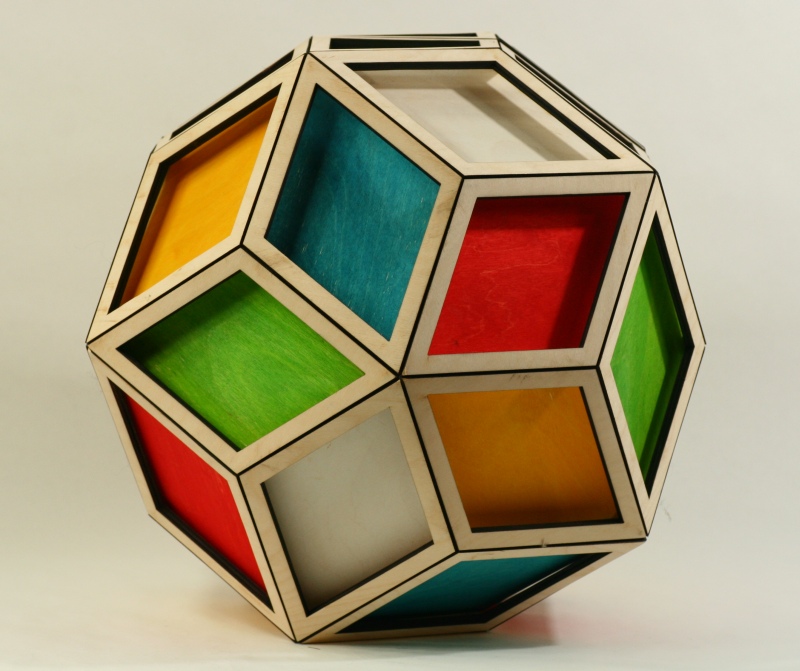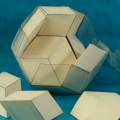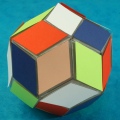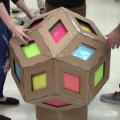
Rhombic Triacontahedron Puzzle

The rhombic triacontahedron (RT) is an interesting and beautiful polyhedron that can be the basis for many mathematical explorations. Its close relationship to the dodecahedron and icosahedron lead to the discovery of many rich geometrical interconnections. It can also be used as a non-threatening way to introduce students to combinatorics. The RT is a shape that students will get excited about when they construct the pieces for a physical puzzle that they assemble themselves. Building a large cardboard version leaves the class with a beautiful object students will want to play with whenever they can, furthering their love of geometry.
Here are three workshops based on the RT. In
the first, students will create a paper puzzle that
assembles inside a clear plastic shell. The second workshop
is a continuation in which some of the combinatorics is
explained and students add a color aspect to the paper
model, thereby increasing the difficulty of the puzzle. In the
third workshop, a human-scale cardboard version is created,
providing a puzzle that students can work on as a
group. To cut out the cardboard pieces accurately, you
will need access to a laser-cutter. If no laser-cutter
is available, the colored paper version can be built
instead, as it covers the same mathematical material.
 |
Part I. Paper |
 |
Part II. Coloring
and Combinatorics |
 |
Part III.
Cardboard Colossus |
The colored RT dissection was
first described by Gerhard Kowalewski in his book Der
Keplersche Körper und andere Bauspiele, Koehlers,
Leipzig, 1938, available in English translation as Construction
Games with Kepler's Solid, tr. David Booth, Parker
Courtney Press, 2001. We wrote a paper summarizing these
three workshops and some of the underlying mathematics, which
you can download from here.
It appeared in the 2016 Bridges Conference
on Mathematics and Art.